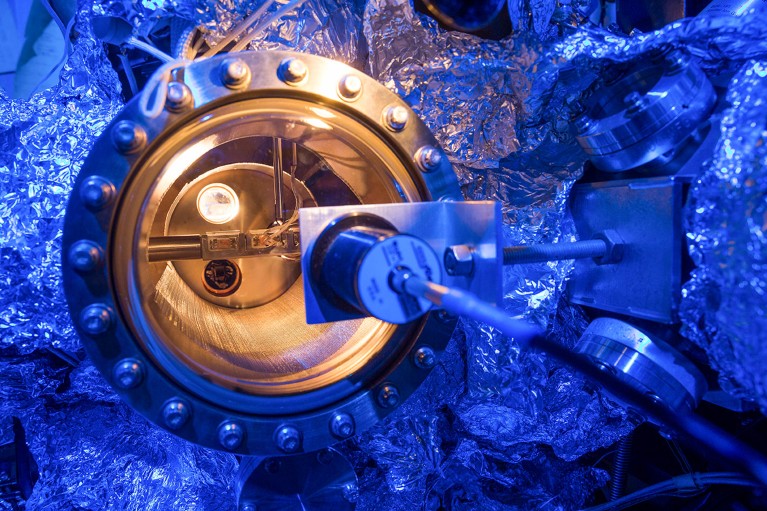
A scanning tunelling microscope (pictured) relies on quantum tunnelling to create ultra high resolution images. Credit: Stan Olszewski/IBM Research/Science Photo Library
Quantum tunnelling — when a particle skips through a barrier that classical physics would forbid — happens faster when objects have less energy, find physicists who worked out a way to probe photons during the process.
The counter-intuitive result contributes to a long-standing debate about how to define tunnelling time, for which there is no single description, and how fast the process occurs.
The results also challenge an interpretation of quantum physics known as Bohmian mechanics, which proposes that particles are guided by waves, say the authors, who published their findings in Nature on 2 July1.
“It strikes me as a real experimental tour de force,” says Aephraim Steinberg, a quantum physicist at the University of Toronto in Canada.
Tunnelling test
In classical physics, if a particle reaches a barrier that it doesn’t have the energy to surmount, it bounces back. But in quantum physics, there is a small but non-zero chance that the particle will bulldoze right through. This phenomenon, called quantum tunnelling, has a key role in processes from photosynthesis to radioactive decay, but its precise nature is not well understood.
The researchers set up an experiment to probe the speed of particles as they tunnel through an energy barrier. They made a waveguide — a mirrored structure that restricts photons’ movement to one direction. By shining a laser at one end of the waveguide, they generated photons that travelled until they met a barrier (a step in the mirrored surface) that their energy should not let them pass.
At this point, photons tunnelled into the ‘forbidden’ region inside the barrier, while also tunnelling sideways into a second waveguide running inside the barrier parallel to the first. A camera captured a snapshot of particle positions over time. Because the researchers knew how readily photons tunnel between the waveguides, they were able to use the build-up of photons in the second waveguide as a clock against which to judge how fast photons were penetrating the barrier. The experiment seems to be the first of its kind, says Steinberg. “These researchers are able to take a ‘photograph’ and observe the clock readings at all positions within the barrier.”
The researchers found that the photons with the most negative kinetic energy (values that don’t translate to the classical world but are allowed inside an energy barrier) tunnelled the fastest, says study co-author Jan Klaers, a physicist at the University of Twente in the Netherlands. This is something that is predicted by quantum mechanics, but has been hard to prove experimentally.
The definition of speed
Physicists have used a range of techniques and definitions to try to measure tunnelling time and speed2. Steinberg is not ready to fully endorse the Twente team’s definition of tunnelling speed, but says “it’s certainly the most natural and classical-like interpretation”.


